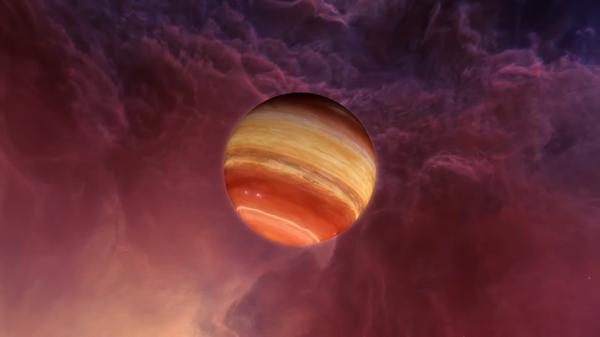image1
Young Free Floating Planets in their parent nebula. © YouTube / Herve Bouy
70 wandering ‘rogue’ planets the size of Jupiter in Milky Way are largest group ever discovered
Astronomers have found dozens of ‘rogue’ exoplanets roaming the Milky Way without a parent star to hold them in orbit. At least 70 such cosmic nomads have been confirmed, but the number could be as high as 170, a new study says.
Only a few such planets, which have masses similar to those in our solar system, had been discovered to date, with this latest batch representing the largest single collection we know about. They were spotted in the Milky Way around 420 light-years from Earth, according to findings published last week in the Nature Astronomy journal.
Such wandering worlds are impossible to image since they are usually located far away from any star that could illuminate them. However, researchers from the Cosmic Dance project at the Laboratoire d’Astrophysique de Bordeaux searched for their heat signatures and other indicators that could be detected by sensitive cameras on large telescopes.
"We measured the tiny motions, the colors and luminosities of tens of millions of sources in a large area of the sky," the study’s lead author, Nuira Miret-Roig, said. "These measurements allowed us to securely identify the faintest objects in this region, the rogue planets."
Since the planets are only a few million years old, they are still young enough to emit heat and infra-red energy. Scanning two decades worth of data from telescopes on Earth and in space, they found at least 70 worlds comparable in size to Jupiter within the Scorpius and Ophiuchus constellations.
Project leader Hervé Bouy said the data from the "tens of thousands of wide-field images" the team studied over "hundreds of hours of observation" added up to "literally tens of terabytes."
The lack of an exact number of the elusive worlds discovered is due to uncertainty over their exact masses. According to the European Southern Observatory, objects that are about 13 times the size of Jupiter are likely to be "failed stars" called brown dwarfs.
Little else is known about how these planets are formed and why they were kicked out of their parent solar system. But Bouy said, "little can be done to study them with current facilities" since the planets are "extremely faint."











